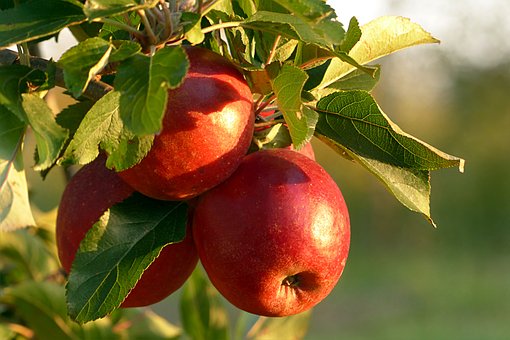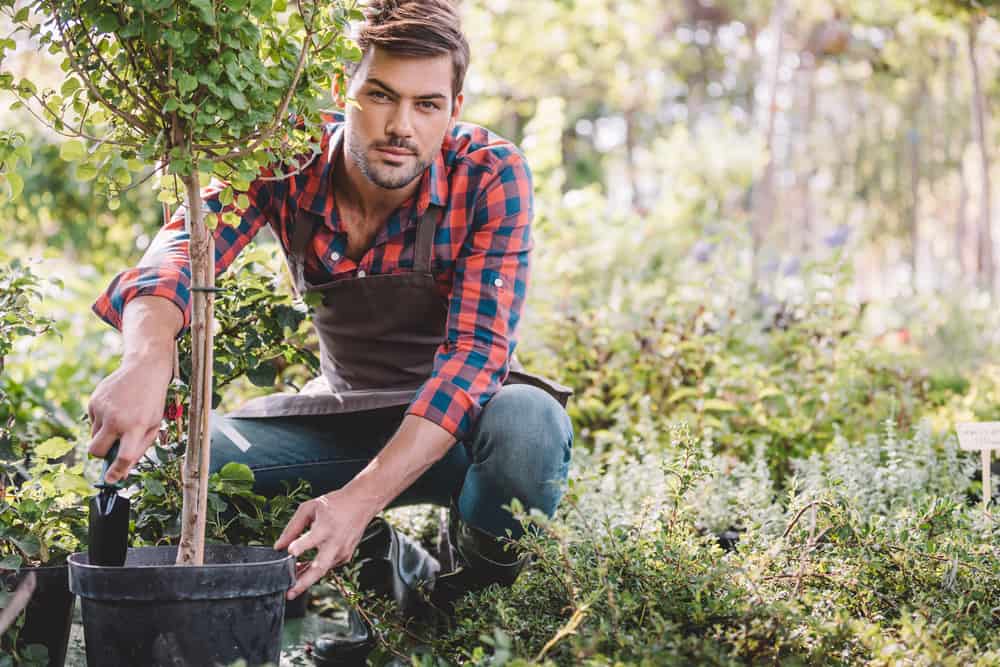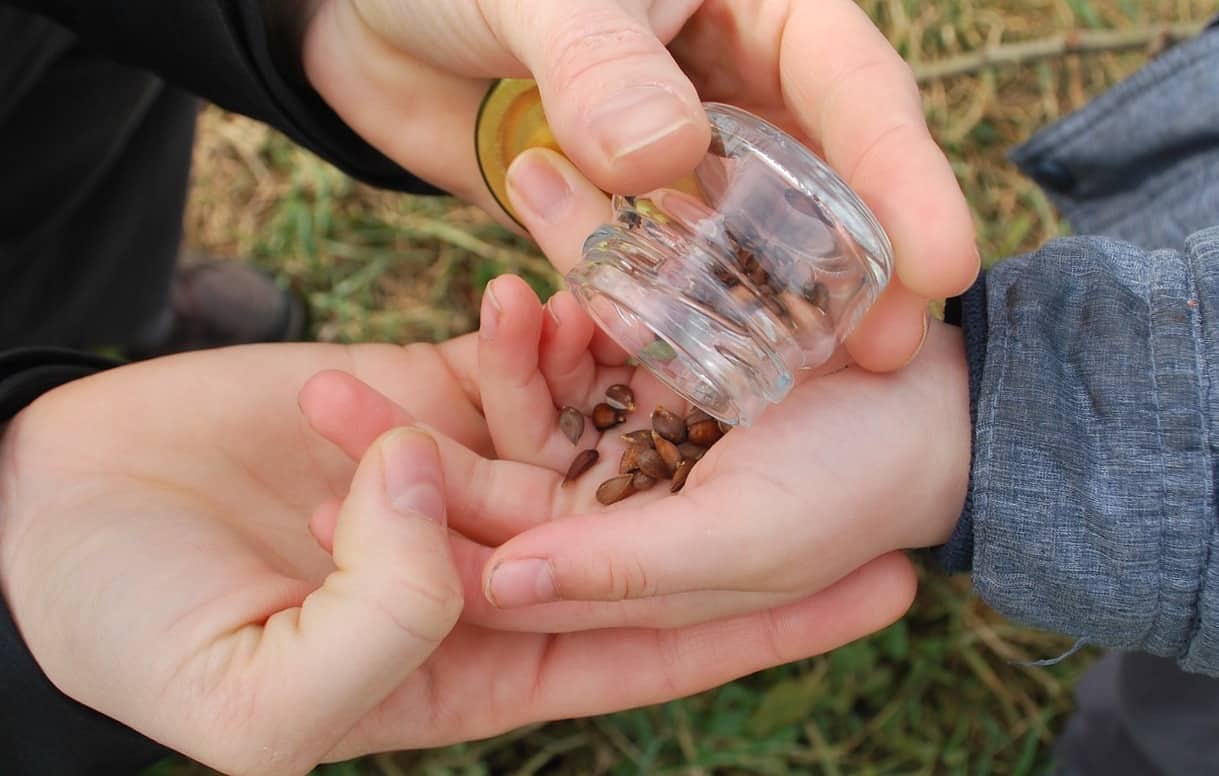Anyone can dig a hole, toss a seed in, give it a little water and let nature take its course. Planting fruit trees, however, will require a little more consideration. Your seeds will be in a dormant state when you harvest them from your store-bought fruit. Stratifying them tricks them into thinking that it’s time to grow. It’s easy to plant your seeds and grow fruit trees from the seeds of fruits you eat every day. You can easily grow Apples, Pears, Cherry, Peach, Plum, Apricot and Nectarine trees yourself, using your own seeds or pits.
But, you need some preparation before planting your fruit trees seeds so read on ten considerations before planting fruit trees seed.
1. How much room do you have?
A seed is just a tiny thing, but a fully matured fruit tree is another thing altogether. Some fruit trees can grow as large as 25 feet tall or larger. In addition to the height alone, some fruit varieties require two trees planted closely together to fertilize and produce fruit.
Fruits grow in several other ways, too. If you don’t have room for a mature fruit tree, you can always consider planting a fruit-bearing bush in a container, or a fruit-bearing vine against a sunny wall or trellis. Many varieties of berries are easily grown in your own back yard. In fact, you may already have some growing back there! Berries are easy to grow and quite hardy. You can grow your own blackberries, blueberries, strawberries, gooseberries; any berry you can imagine is easily grown from seed. The advantage with berries is that they are more compact bushes and will yield fruit rather quickly compared to other fruit trees.
2. What climate zone are you in?
You may love the idea of a fresh, ripe banana but if you don’t live in the right climate, your tree will never flourish. Research the fruit that you want to grow and be sure you’re giving it a fighting chance with your climate zone. Citrus fruits such as Grapefruit, Lemons, and Tangerines are notoriously warm weather trees, they can be grown in slightly cooler climates if you take care of them. So, consider the local weather before planting fruit trees seed.
3. What are you using the fruit for?
Some varieties of fruit are used for certain things. Some varieties are meant to be eaten right off the tree, while others are better used in baking. Other varieties, like crabapples, aren’t really intended to be eaten at all. It’s important to understand that if you are using seeds from an apple that is generally a baking variety, you will grow only those intended for baking by planting its seeds.
- Top 10 Houseplants That Relieves Stress And Purifies The Air
- 12 Surprising Fennel Seed Health Benefits
4. Soil type
Some fruit trees will do best in acidic soils, some may prefer sandy, and some thrive in loamy soil. It is possible to grow a fruit tree in different soil, but a firm foundation of its preferred soil is best.
5. Pests
Some pests are universal, while some seem to generally choose certain areas. Fruit trees are highly susceptible to pests, and an infestation will quickly destroy your fruit or the tree itself.
6. It may be years before you can harvest
You need to consider the harvesting time before planting fruit trees seed. Even the healthiest of trees may take several years before yielding fruit. An estimate of between three to five years is generally accepted, but some fruits can be harvested much earlier, or much later, than that. Once a tree begins to yield fruit, it will continue to do so year after year if it is healthy and well maintained.
7. When you plant the seeds
It is important that your fruit tree gets warm sun with no chance of late frosts. If your climate is unpredictable in early spring, you may want to think about starting the seeds in a container inside to let them develop a strong, healthy root system and to protect them from the elements.
8. As your tree grows, it will require maintenance
Pruning, thinning the crops, insecticides if necessary, watering and fertilizing are all examples of what your fledgling tree will need as it grows. Prepare to protect your young fruit tree in the winter. You will need to cover your saplings with plastic or burlap to keep them warm and protected from the cold. Therefore, you need to consider the maintenance process before planting fruit trees seed.
9. Where will you plant it?
In addition to the size considerations, your growing tree will need daily exposure to full sun, protection from wind, and good drainage. If you don’t have room or a large fruit tree or rapidly growing berry bushes, you may think about planting vine fruits. These include melons and grapes, but also dragon fruit, kiwi, and passion fruit.
10. Seed stratification
Before planting your seeds, you may need to put them through a stratifying process. This refers to the process of bringing the seeds out of their period of dormancy by mimicking the conditions it would normally face in the wild, effectively fooling the seeds into thinking it’s time to germinate. Seeds are placed in wet paper towels or peat soil and placed in the refrigerator after having been left in warm conditions for a time. How long the process takes depends on the seeds you want to plant.
Make sure to read up on your fruit tree for the proper amounts of water, warmth, and sun it needs when you first plant it. Make a note of the brand of fruit where you have harvested the seeds. The brand name can be researched to give you insight regarding your fruit trees. Planting fruit trees from seeds is a fun activity to do and is very rewarding as you watch them grow. Do a little more research and see which of these ten fruit trees you can grow using your own seeds or pits.





